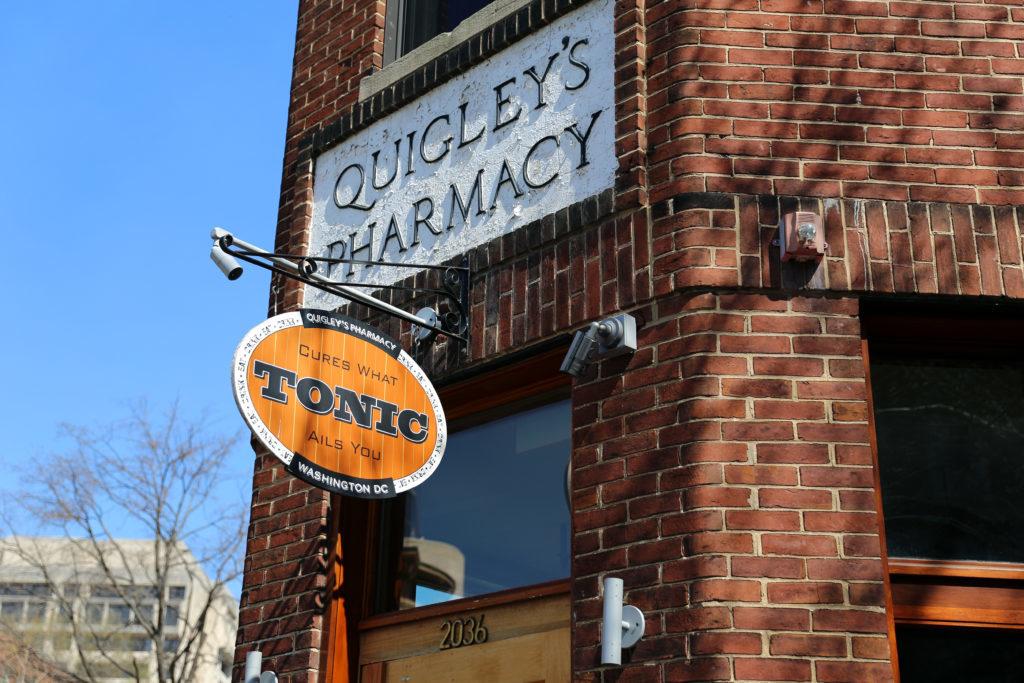Despite repeated administrative efforts to get more restaurants onto the meal deal program, several GWorld vendors are still not on board.
The University introduced the meal deal program last academic year to provide more affordable options for students to purchase meals from GWorld vendors and tamp down affordability concerns about the meal plan. One year later, 25 dining services offer meal deals, with two more “coming soon,” according to the GW dining website.
Officials said they have repeatedly reached out to vendors and encouraged them to sign on – but the effort has been largely unsuccessful because some vendors offer meals at lower prices than the set meal deal price or are restricted by corporate policies. In more than 10 interviews with vendors, store managers had mixed opinions about the meal deal program, and some said it made more sense for their stores to offer their own student discounts outside of the typical $6 breakfast, $8 lunch and $10 dinner that a meal deal requires.
Alicia Knight, the senior associate vice president of operations, said since the meal deal program was introduced last academic year, the University has recruited 27 of the 105 GWorld vendors to participate, with 12 additional vendors offering their own discounts to students.
She said the University has reached out to every GWorld vendor several times and is continuing to recruit, but some meal providers could not offer a deal because of “corporate restrictions.” Knight said officials are working to overcome this obstacle by determining if there are any additional discounts the stores can provide.
“Meal deals, along with additional discounts and specials, are ways of providing affordable meals for our students, while at the same time better directing students to our dining partners,” Knight said in an email.
Knight declined to say how many vendors are planning to offer meal deals next academic year, if she is satisfied with the number of vendors that currently offer meal deals and how the University is recruiting more vendors to join the program.
Logan Malik, the Student Association’s vice president for undergraduate student policy, said officials have not met the SA’s call to restructure its meal deal program and cut costs by $2 for breakfast, lunch and dinner. Ojani Walthrust, the SA’s executive vice president-elect, highlighted the change on his campaign platform last month.
“These are very important, but I don’t think they’re functioning the way that they should be,” Malik said, referring to the meal deal program.
Malik said the University should not just advertise meal deals on social media or on its website, but in “every single pamphlet or every single informational packet that goes out.”
Vendors that offer meal deals said the packages are reasonable discounts that help students address affordability concerns and entice them to spend money at restaurants they may not have normally visited. They said the University sends vendors informational pamphlets that outline the meal deals program and restaurants can decide whether to offer them.
Park Sang, the manager of Cafe Aria, said the University did not reach out to his restaurant to offer a meal deal, but he joined the program after reaching out to the administrators himself because he wanted students close to the restaurant to have low-cost meals.
“I want to give something to the students. I want to give some favors that I may, and also in front of my store is the dormitory,” Sang said, referring to Thurston Hall, which is located across the street. “I want to have a lot of people come in and enjoy my food.”
But a store manager who canceled her meal deal partnership said while the discount is beneficial for students, the deals aren’t well-known because the University often only listed the discounts on a website and doesn’t advertise them effectively.
Helen Choi, the manager of Gallery Market, said her business dropped their meal deal package last academic year because students were unaware any discount existed. She said she asked administrators to cancel their partnership with the meal deal program, but never heard back.
“We advertised it with a board on the building to the customers, to the students, but they don’t respond,” Choi said. “So no need to do it anymore.”
Some restaurants created their own discounts for students outside of the typical meal deal setup to create more affordable dining options while developing a discount that works for the vendor’s budget.
Mark Bernstein, a manager at Au Bon Pain, said he was approached by the University to begin offering discounts to students after the J Street dining hall closed in the Marvin Center two years ago. Instead of subscribing to the $6, $8 and $10 model, the store offers GWorld users a $2 discount off purchases that total $9 or more.
Bernstein said vendors may be reluctant to introduce meal deals because the University pockets about 10 percent of the profit made from GWorld vendors.
“You’ve got higher processing fees, you’ve got higher costs,” Bernstein said. “It can really hurt your bottom line.”
At Tonic Restaurant, students can purchase a cheeseburger for $10 every Sunday evening. Jeremy Pollok, the owner of the restaurant, said he believes the burger deal has increased the number of students going to the restaurant on Sundays, especially after he publicized the discount on Facebook and Instagram.
“Tonic always tries to be a part of the GW community, we’ve been here for 11 years, and it’s nice that we get people coming back now who say ‘oh, I used to come here for this, and I used to come here for that,’” he said. “It’s nice to be a part of that.”




